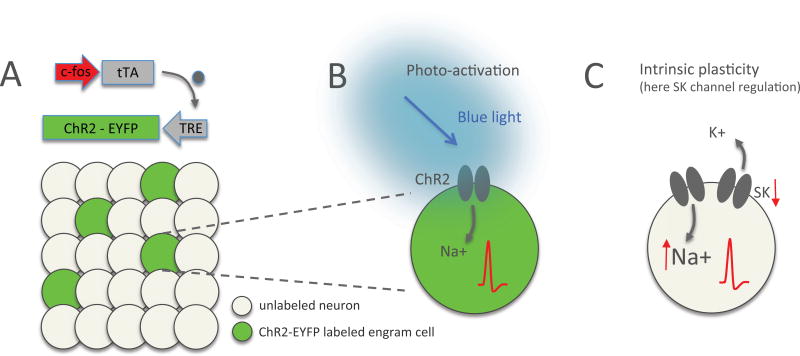Figure 1.
Neural engram labeling / re-activation and plasticity. (A) Engram cells can be labeled by expression of ChR2-EYFP after activation of an activity-dependent promoter such as c-fos or arc. Labeled engram cells (green) can be re-activated by photo-stimulation of channelrhodopsin (ChR2). TRE: tetracycline-responsive element; tTA: tetracycline transactivator (grey dot). (B) Photo-activation of a ChR2-expressing neuron with blue light causes influx of Na+ ions and depolarization, which brings the membrane potential closer to the spike threshold and enhances the probability of spike firing. (C) Intrinsic plasticity results from a cell-autonomous modulation that similarly changes the probability of action potential generation. In the example shown here, intrinsic plasticity-related downregulation of calcium-activated, small conductance SK-type K+ channels will reduce the afterhyperpolarization following depolarizing events. As a consequence EPSPs will be enhanced and prolonged and the spike threshold will be reached more easily (EPSP amplification, faster re-depolarization toward threshold and/or reduction of the threshold itself).

